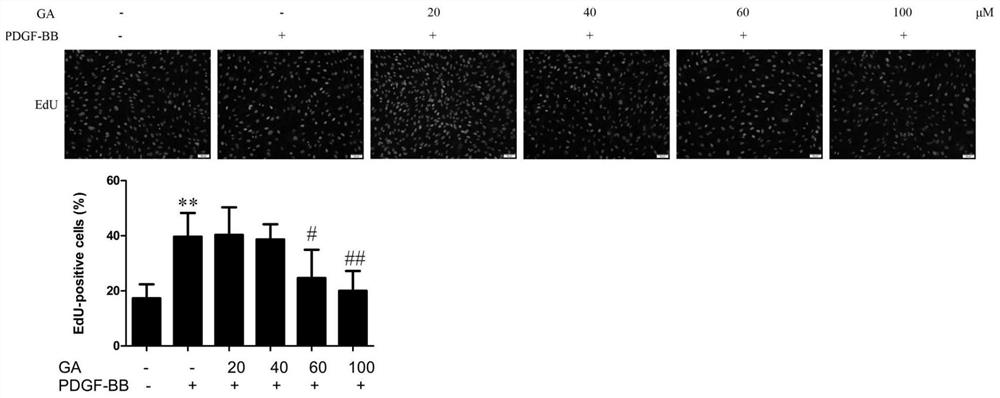Application of ginkgolic acid in preparation and treatment of drug for treating vascular restenosis diseases
A technology of ginkgolic acid and restenosis, which is applied in the application field of ginkgolic acid in the preparation and treatment of vascular restenosis drugs
- Summary
- Abstract
- Description
- Claims
- Application Information
AI Technical Summary
Problems solved by technology
Method used
Image
Examples
Embodiment 1
[0072] Application of ginkgolic acid in the preparation and treatment of drugs for vascular restenosis, the structural formula of ginkgolic acid is Molecular formula C 24 h 38 o 3 , the molecular weight is 374.5612.
[0073] The preparation method of ginkgolic acid is as follows: the outer testa of ginkgo biloba is peeled off, the drying temperature for the first time is 50°C, the drying time is 50min, the moisture is reduced to 20%, the second drying temperature is 65°C, and the drying time is 45min , the moisture content after drying is 6-10%, crushed to fine particles with a particle diameter of 0.1-0.5 mm, 80% EtOH is refluxed and extracted 3 times at 70°C to obtain a crude extract, and then dissolved with 96% EtOH Become a saturated solution, filter with macroporous resin, and elute with 20%, 40%, 80%, and 95% EtOH in sequence; the eluent is evaporated and dried to a moisture content of 1-2% to obtain the final product of ginkgolic acid C17:1.
[0074] Described gink...
PUM
 Login to View More
Login to View More Abstract
Description
Claims
Application Information
 Login to View More
Login to View More - R&D
- Intellectual Property
- Life Sciences
- Materials
- Tech Scout
- Unparalleled Data Quality
- Higher Quality Content
- 60% Fewer Hallucinations
Browse by: Latest US Patents, China's latest patents, Technical Efficacy Thesaurus, Application Domain, Technology Topic, Popular Technical Reports.
© 2025 PatSnap. All rights reserved.Legal|Privacy policy|Modern Slavery Act Transparency Statement|Sitemap|About US| Contact US: help@patsnap.com



